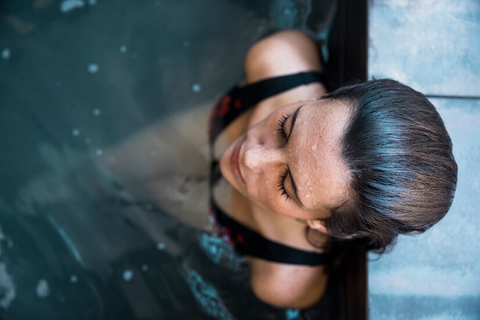Saunas Feb 23, 2024
Top 10 Mistakes to Avoid in Cold Plunges
 Adam Hood
Adam Hood

Cold plunging, or immersing your body in cold water, has become a popular practice for improving physical and mental health. It is one of the most relaxing activities one could do to get rid of all the stress.
However, making mistakes in cold plunging can lead to serious health risks. Some of the common risks are hypothermia, shock, and injury. To help you avoid these mistakes, we have put together the top 10 mistakes to avoid in cold plunges. You can find some of the best cold plunges at: Cold Plunges by Sun Home Saunas.
1. Starting Too Cold
Unless you are a cold-exposure veteran, don't make the mistake of starting at 39 degrees. We recommend starting somewhere between 50 and 60 degrees. Another effective way is to drop it a degree every week as long as you can stay in for at least 2 minutes. Studies show incredible anti-inflammatory benefits all the way up to 60 degrees.
2. Going Too Long
Don't try to set personal records or challenge yourself on time. After 5 minutes, the benefits will become diminished and could even be harmful if you are in too long.
The goal of cold plunging is hermetic stress, which is like a good workout where you bounce back stronger than you were before. After 5 minutes, you can get rid of too much stress that can enter the field of doing more harm than good.
3. Lacking Consistency
Studies show that results from cold exposure compound with consistency. If you want to challenge yourself, you should try to see how many days in a row you can plunge.
Plunging 2x per week for 5 minutes each isn't as effective as plunging 5x a week for 2 minutes. You can try creating a cold plunge routine you stick to. No matter how busy you are, you have 2 minutes in your day. Strive for consistency to get optimal results.

4. Breathing Too Fast
It's challenging, but controlling your breath is the most important part of your plunge experience. It's hardest in the first few moments, but if you focus on it, you should be able to slow your breathing down to a parasympathetic state.
Normally, that is something around 5-8 breaths a minute. Your breath is your greatest asset and your greatest anchor in the plunge. Use it to your benefit, and you will start having a much easier, more enjoyable, and beneficial experience in the plunge.
5. Staying Too Shallow
It's important to get as much of your body into the water as possible. When you get into the plunge, you want to slide all the way in so that you get the vagus nerve in your neck submerged.
This helps trigger the body's cold shock response to release norepinephrine, a powerful anti-inflammatory and mood-booster. The hands are the toughest part to submerge, so we recommend cycling them in and out of the water if you cannot hold them in the whole time.
6. Not Warming Up Beforehand
Cold plunging can be a shock to the system, so it's important to warm up beforehand. Do some light exercise or stretching to get your blood flowing and your body warmed up. This will help you acclimate to the cold water more easily and reduce the risk of injury.
7. Not Monitoring Your Body Temperature
It's important to monitor your body temperature during the plunge. If you start to shiver uncontrollably or feel lightheaded or dizzy, it's time to get out of the water. These are signs that your body is struggling to maintain its core temperature and could be at risk of hypothermia.
8. Not Hydrating Beforehand
Cold water can be taxing on the body, so it's important to hydrate beforehand. Drink plenty of water to make sure that your body is properly hydrated and able to handle the stress of the cold water.
9. Not Recovering Properly Afterward
After cold plunging, it's important to take time to recover properly. Warm up with a hot shower or warm beverage, and give your body time to recover before engaging in any strenuous activity. This will help reduce the risk of injury and ensure that you get the most benefit from your plunge.
10. Not Seeking Medical Advice
If you have any underlying health conditions or concerns, it's important to seek medical advice before attempting a cold plunge. Cold water can be dangerous for some people, and it's important to make sure that you are healthy enough to handle the stress of cold water.
Conclusion
In conclusion, cold plunging can be a powerful tool for improving physical and mental health, but it's important to avoid these common mistakes to ensure a safe and enjoyable experience. By following these tips, you can get the most benefit from your cold plunges and enjoy the many benefits of this powerful practice.
Don’t Miss Out!
Get the latest special deals & wellness tips!





